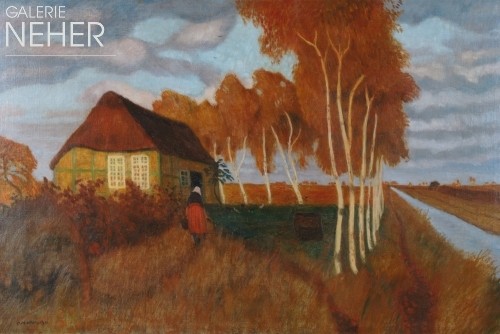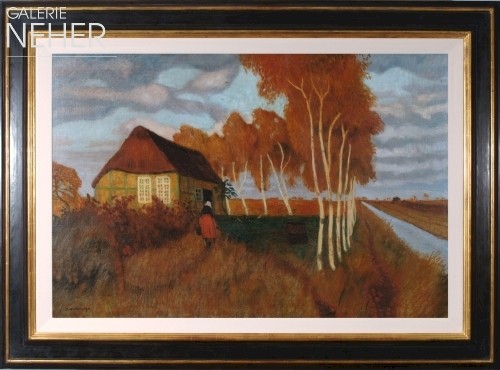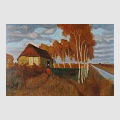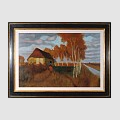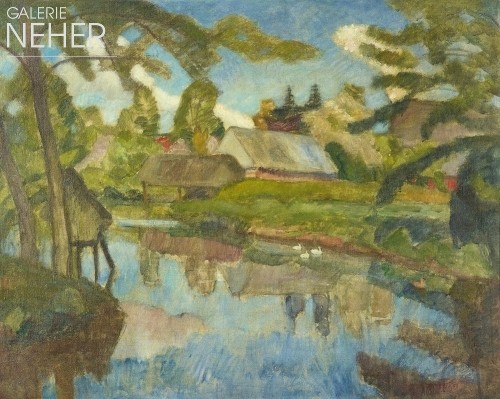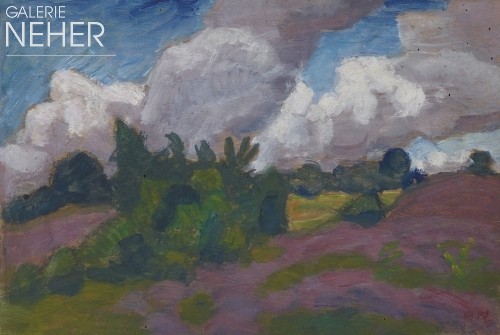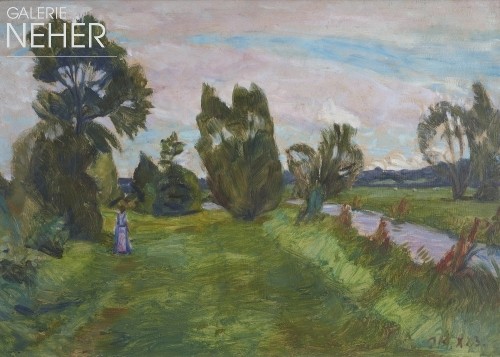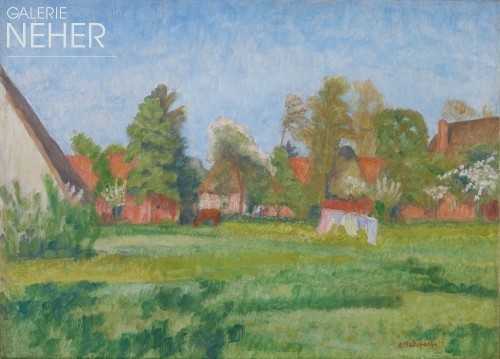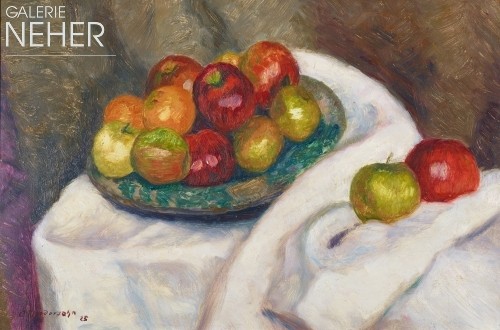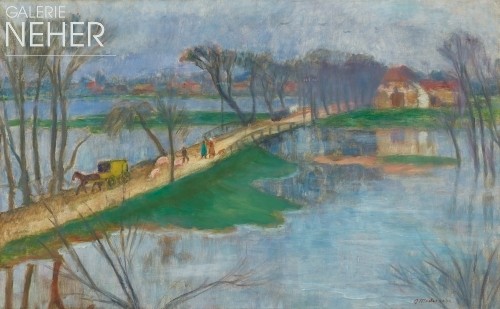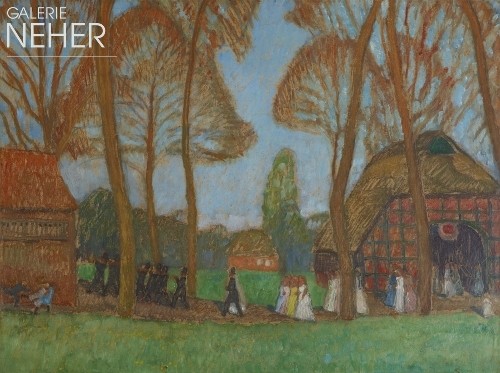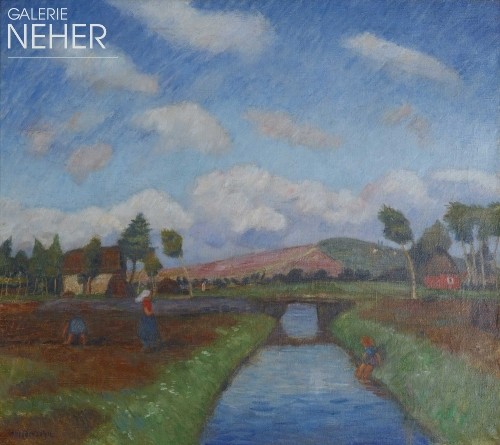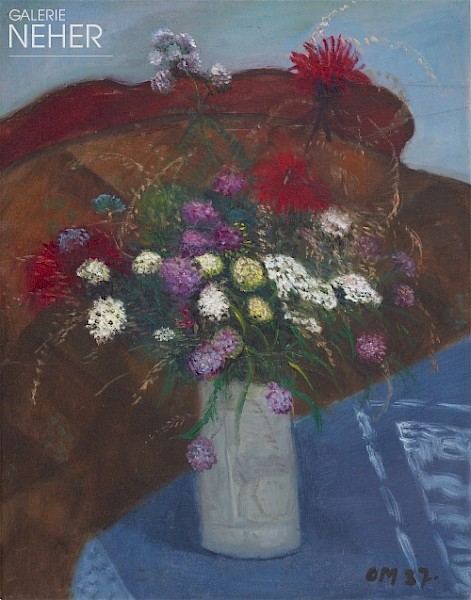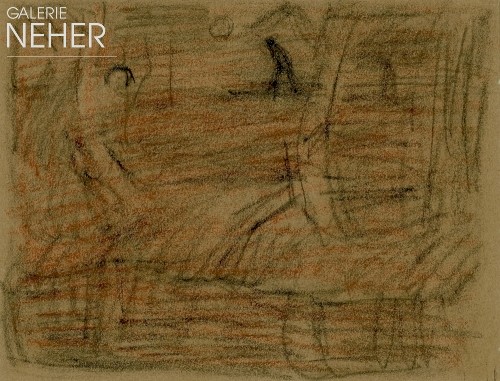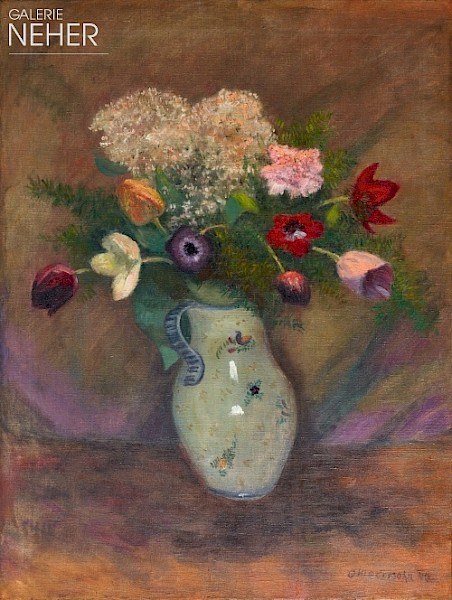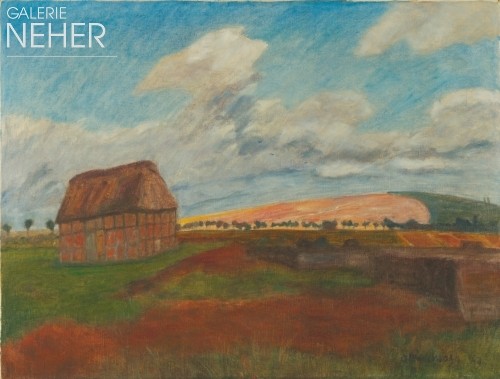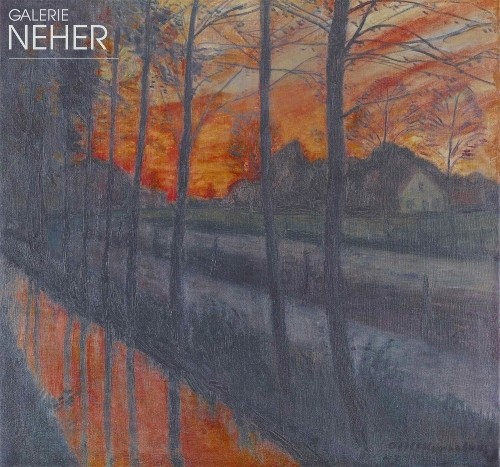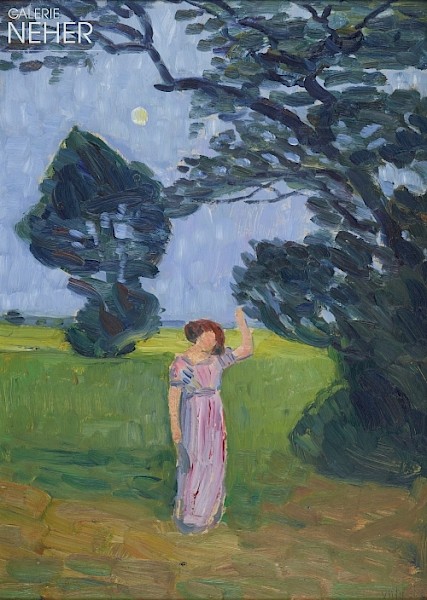Otto Modersohn - Spätsommer im Moor, Herbstlandschaft am Moorkanal (Late Summer on the Moor, Autumnal Landscape on the Moor Canal), ca. 1922
Oil on canvas
80 x 120 cm / framed 113 x 152 cm
31 x 47 inch / framed 44 x 59 inch
signed bottom left: “O Modersohn”
with handmade craftsman frame
N 8896
78,000 €
Expertise:
Otto Modersohn Museum, Fischerhude - Christian Modersohn vom 08.07.2006
Provenance:
Private collection
Exhibitions:
Essen, Galerie Neher, Expression und Leidenschaft, Kunst aus dem 20. Jahrhundert, 2016, Katalog mit farbiger Abbildung Seite 31
Otto Modersohn - Spätsommer im Moor, Herbstlandschaft am Moorkanal (Late Summer on the Moor, Autumnal Landscape on the Moor Canal), ca. 1922
Oil on canvas
80 x 120 cm / framed 113 x 152 cm
31 x 47 inch / framed 44 x 59 inch
signed bottom left: “O Modersohn”
with handmade craftsman frame
N 8896
78,000 €
Expertise:
Otto Modersohn Museum, Fischerhude - Christian Modersohn vom 08.07.2006
Provenance:
Private collection
Exhibitions:
Essen, Galerie Neher, Expression und Leidenschaft, Kunst aus dem 20. Jahrhundert, 2016, Katalog mit farbiger Abbildung Seite 31
About the work
In between his frequent travels, Otto Modersohn lived and worked chiefly in the village of Fischerhude (from 1908 until he passed in 1943), in which he settled following the death of his second wife Paula Modersohn–Becker, who suffered a fatal embolism giving birth to their daughter Mathilde in 1907 at the age of just 31. It was here that he struck up a close friendship with the fellow artist Heinrich Breling whose daughter Louise he married in 1909. Modersohn had become acquainted with the area in 1896, whilst undertaking a walking tour together with Fritz Overbeck around the village of Fischerhude, which lies only some 20 kilometres south–east of Worpswede: “We explored in all directions and were impressed by its authentic character. Everywhere were thatched cottages and barns, and sturdy oak trees. The scenery became even more interesting as we approached the banks of the Wümme, around the old water mill – so much so, that Overbeck remarked that we had erred in our choice of Worpswede, as Fischerhude surpassed it in painterly attractions. We drew until our sketch books were full.”(1) In the Spätsommer im Moor (Late Summer on the Moor) the growing two–dimensionality and consolidation of form, a feature of Modersohn's work since 1920, becomes ever more pronounced. The compositional clarity of the largely geometrically structured landscape evokes the atmosphere of the real landscape far more impressively than a lavishly detailed representation. In 1922, the artist couple Friedrich Ahlers–Hestermann und Alexandra Povòrina (Alexandra von Povorinskaja) spent a few months in Fischerhude, before in September of that year travelling to the Franconian town of Wertheim to conduct further artistic research. Here Modersohn began studying the works of Paul Cézanne, which found expression in his increasingly evident departure from representations of nature. In 1924 Otto Modersohn postulated self–confidently: “[…] for the only true painter is he, who, imbued with nature, freely re–imagines it – art is the act of recreating on the basis of nature."(2)
1 Otto Modersohn, quoted from: Christian Modersohn, “Vorwort”, in: Otto Modersohn. Fischerhude 1908–1943, hrsg. vom Otto Modersohn Museum, Fischerhude 1993, S. 11–13, hier: pp. 11–13, here: p. 11.
2 Otto Modersohn, quoted from: Jörg Paczkowski; “Wie köstlich ... der anregende künstlerische Verkehr! Ein bisher kaum bekannter Freundeskreis um Otto Modersohn in Wertheim und Würzburg und dessen Bedeutung für sein weiteres Werk”, in: ibid., pp. 85–88, here: p. 86.
Text authored and provided by Dr Andrea Fink, art historian
The art historian, curator and freelance publicist Andrea Fink studied art history, cultural studies and humanities, modern history and philosophy in Bochum and Vienna. Doctorate in 2007 on the work of the Scottish artist Ian Hamilton Finlay. As a freelance curator and art consultant, her clients include, among others, the Kunstverein (art association) Ahlen, Kunstverein Soest, Wella Museum, Museum am Ostwall Dortmund, ThyssenKrupp AG, Kulturstiftung Ruhr, Osthaus Museum Hagen, Franz Haniel GmbH, Kunsthalle Krems, Austria.
